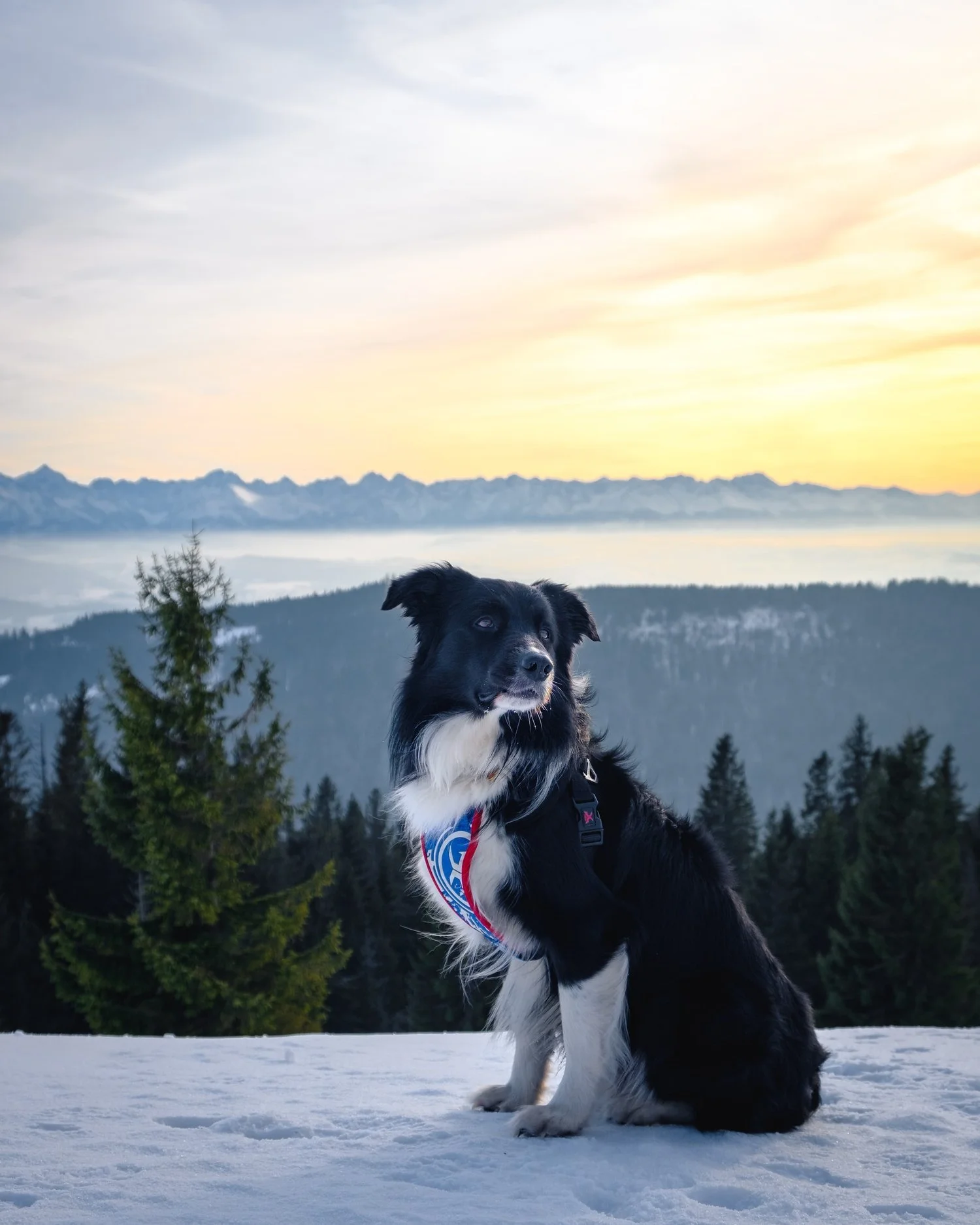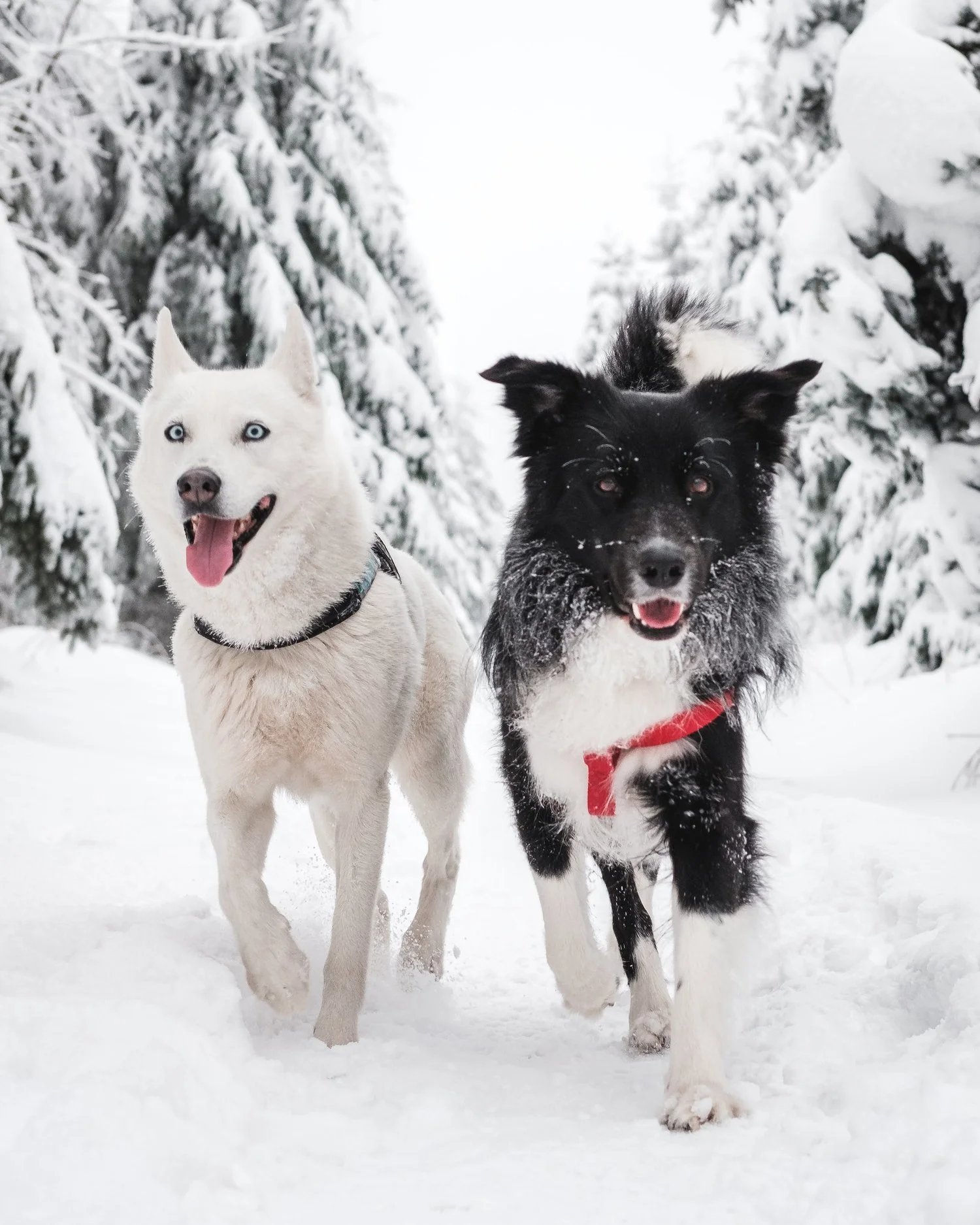9 Tips for Winter Hiking with your Dog
by Aventura on November 09, 2022
Hiking is a great way to explore, enjoy the outdoors and get some exercise all at the same time. It can be challenging, especially when you are hiking in below-freezing temperatures during the winter.
Winter hiking with your dog can be a fun and rewarding experience. Just like humans, dogs need to get out in the fresh air and exercise regularly. The winter months are a great time for both you and your pup to enjoy an invigorating hike through the snow. It's also a great way to stay active, spend time with your dog, and bond with friends and family.
9 Tips for Hiking with Your Dog in The Winter
Dogs like to run, but it can be challenging to keep up with them in winter weather. You'll need to pay attention to ice and snow, be prepared for changing conditions, and carry all of the extra gear that comes with winter hiking. But once you know what you're doing, it's easy!
Winter hiking can be a lot of fun for you and your dog, but it also presents some unique challenges. If you're thinking about taking your four-legged friend with you on the trails this winter, here are some helpful tips to keep in mind:
Know your Dog's Limits
Before you go on any hike, make sure you know how far and long your dog can walk. If your dog has never hiked in the snow before, start on easier trails, and gradually increase the distance and elevation gain over time. Check with your vet beforehand to make sure that hiking is appropriate for your pet's age, weight, and health issues.
Research your Breed
Some breeds are better equipped to keep themselves warm and withstand winter temperatures and conditions such as snow and ice. When in doubt, do a some research on your dog’s breed and their ability to handle the conditions before venturing out too far. This will give you a baseline understanding of how to best manage your dog’s safety in terms of conditions and winter gear.
Look for Hypothermia
Understanding the symptoms of hypothermia is also crucial. Dogs with hypothermia show symptoms that include shivering, drowsiness, trouble walking, and pale gums. Being ready for anything is the greatest way to avoid something from happening. Always be prepared by doing your homework and picking a path that is well within your skill and that of your dog, and always remember to bring along enough/extra warm clothing for your dog.
Watch out for Frostbite
Preventing frostbite is as simple as keeping your dog's paws warm and dry by carrying booties in your backpack and putting them on him before setting out on a hike. If their feet get wet, make sure they're dried off before putting on the booties again. If you're planning on spending an extended period outside, consider investing in dog booties that keep your pup's paws protected from snow and water at all times.
Pack Appropriate Gear
It’s never a bad idea to pack extra gear in case of emergencies. Depending on where you are going, how far, remote or backcountry the terrain is, you might want to include items in your pack like water, snacks, first aid supplies, drying towel, and an emergency blanket or sleeping bag. Consider adding a GPS device so rescuers can find you if you become lost or hurt during your snow outing. Check out our post on best hiking gear for your dog for more ideas.
Stay on Level Terrain
Many trails are steep during the winter months due to snow accumulation and ice formation. Ice can also form around rocks or tree roots, making these areas even more treacherous than usual. Be mindful of where your dog is stepping so your pup doesn't slip or fall into deep snow or a drop off while hiking with you. Don't force your dog onto such terrain if they seem uncomfortable doing so; instead, try another route that has fewer steep inclines or none at all.
Dress for Success
Just as important as dressing yourself appropriately for winter hiking is dressing your dog appropriately as well. Hiking on snowy, icy trails in January is not for the faint of heart. Make sure that everyone in your hiking party is dressed properly for the conditions. Dogs should wear coats or jackets that cover their legs and stomachs, as well as boots or shoes with treaded soles that provide traction on slippery surfaces.
Short-haired dogs might benefit from dog sweaters and jackets in chilly weather. Larger dogs with thick hair may overheat in sweaters and coats because their natural coat keeps them warm enough.
Choose a sweater or jacket for your dog that doesn't hang too low to the ground, isn't too tight, and doesn't have any dangling or tearing hazards. Make sure your dog's legs can move freely, and if you can, try on the harness at the store.
If their sweater or jacket becomes wet, the single most crucial thing you need to keep in mind is that you need to take it off immediately. You shouldn't let your dog outside in the cold if they're wearing damp clothing.
Bring Water and Snacks
Your dog will need plenty of water and snacks along the way or during breaks in the hike. If you are hiking for more than an hour or so, bring an extra supply just in case your dog needs it.
Dispose of Waste Wisely
It's always best to carry waste bags or use those provided by most parks and forests. If there aren't any bags available, grab a stick and bury poop at least 8 inches deep in an area where it won't wash away. If you do have bags with you, and plan to carry-out, we recommend double-bagging the waste so that if one rip occurs, the second bag isn't compromised and will save your backpack. Also helps with any unwanted smells.
Winter Hiking Is Fun But Be Prepared
We hope that you've found this article helpful. Hiking with your dog can be a lot of fun, but it's important to remember the risks associated with it for both you and your pooch.
Ultimately, there is no way to predict exactly how your dog will react on a winter hike. It all depends on their breed, personality, and how they interact with the elements in the environment. Just make sure to start slow and be prepared for anything, so that you can have a fun, safe experience. Also, remember to respect your dog when they are out hiking with you; recognize that this is a new experience for them and don't push them too hard or too fast.








